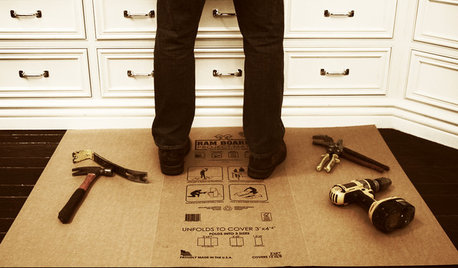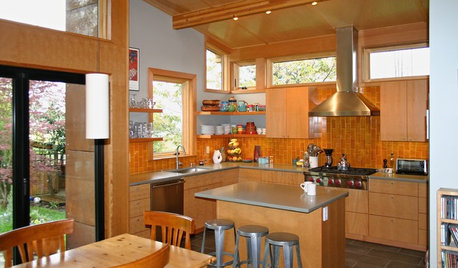Lung protection
Debbie Downer
10 years ago
Related Stories

FIREPLACESDesign Workshop: Smart Ways to Store Wood Outdoors
Consider size, location, protection, air circulation and, of course, style for storing your firewood
Full Story
BATHROOM DESIGNOut With the Old Tile: 8 Steps to Prep for Demolition
This isn't a light DIY project: You'll need heavy-duty tools and plenty of protection for your home and yourself
Full Story
HEALTHY HOMEWhat to Know About Controlling Dust During Remodeling
You can't eliminate dust during construction, but there are ways to contain and remove as much of it as possible
Full Story
HEALTHY HOMEHow to Childproof Your Home: A Grandmother’s Wisdom
Change kids’ behaviors, not your entire house, to keep the designs you like and prepare children for reality
Full Story
CONTRACTOR TIPS10 Things to Discuss With Your Contractor Before Work Starts
Have a meeting a week before hammers and shovels fly to make sure everyone’s on the same page
Full Story
GREEN BUILDINGEcofriendly Cool: Insulate With Wool, Cork, Old Denim and More
Learn about the pros and cons of healthier alternatives to fiberglass and foam, and when to consider an insulation switch
Full Story
PETSHow to Help Your Dog Be a Good Neighbor
Good fences certainly help, but be sure to introduce your pup to the neighbors and check in from time to time
Full Story
MOST POPULARWhat to Do After a Hurricane or Flood
How you treat your home after a natural disaster can make all the difference in its future livability — and your own personal safety
Full Story
HEALTHY HOMEWhat's the Deal With Radon?
Get the facts on testing for this cancer-causing gas — and how to make your home safe if it shows up
Full Story
MATERIALSInsulation Basics: What to Know About Spray Foam
Learn what exactly spray foam is, the pros and cons of using it and why you shouldn’t mess around with installation
Full Story









sloyder
aidan_m
Related Professionals
University Park Cabinets & Cabinetry · Miami Carpenters · Morristown Carpenters · San Marcos Carpenters · Tualatin Carpenters · University City Flooring Contractors · East Hemet Flooring Contractors · Gilroy Flooring Contractors · Lakewood Flooring Contractors · Riverbank Flooring Contractors · Suitland Flooring Contractors · Easton Furniture & Accessories · San Diego Furniture & Accessories · Zionsville Furniture & Accessories · Holliston Furniture & Accessoriesaidan_m
lazy_gardens
bobismyuncle
Debbie DownerOriginal Author
klem1
Debbie DownerOriginal Author
aidan_m
klem1
rwiegand
tbo123
mike_kaiser_gw